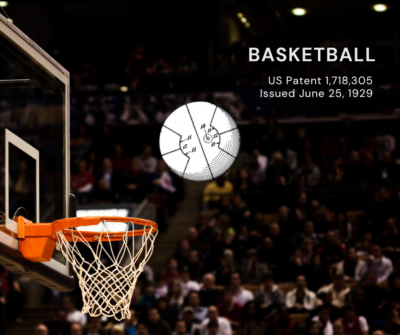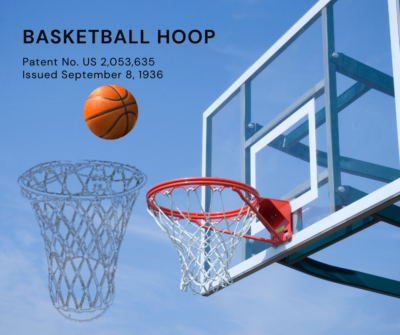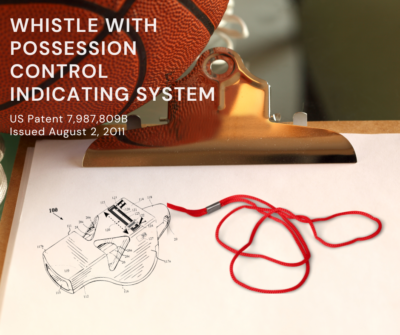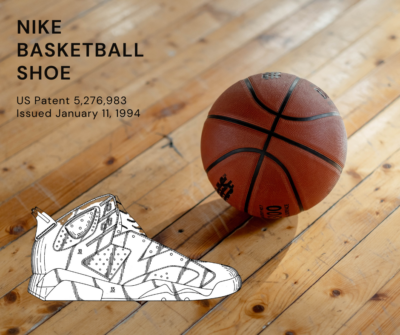The Evolution of Basketball: Patents That Shaped the Game
As we dive into the world of basketball and get ready for the “madness,” it’s fascinating to see how patents have shaped the game we love today. From the ball itself to the hoops and shoes, each innovation has contributed to the evolution of basketball. Let’s take a closer look at some key patents that have made a significant impact.
Basketball: US Patent 1,718,305 (1929)

The basketball we know today has come a long way since its first iteration. In 1929, George L. Pierce was awarded US Patent No. 1,718,305 for his design of the basketball.
This patent addressed issues with earlier balls, which were made from panels of leather that tapered to points at the sphere’s poles where they were laced together. Pierce’s design changed the shape of the panels and stitched the ball closed, resulting in a more balanced and resilient ball.
Fun fact: Until the late 1950s, basketballs were actually dark brown! It was a college basketball coach, Tony Hinkle, who thought the color was too dark for fans to see, leading to the iconic orange basketball we use today.
Basketball Goal/Hoop: US Patent 2,053,635 (1936)

The evolution of the basketball hoop is equally intriguing. Alvie Sandberg patented one of the closest versions to the modern-day net in 1936 with US Patent No. 2,053,635. This is the same design still used today in basketball games worldwide.
Before this, the game was played with peach baskets, which had to be manually emptied after each score. Sandberg’s innovation allowed for a more seamless and efficient game.
Whistle with possession control indicating system: US Patent 7,987,809 (2011)

In 2011, Luis H. Uribe and Anthony J. Palmeri patented a revolutionary whistle with possession control indicating system under US Patent No. 7,987,809. This innovative design integrates a possession indicator directly into the whistle, allowing referees to accurately track which team has possession without taking their eyes off the game. The whistle features a friction lock slider or a pop-up indicator that displays ‘H’ for home team or ‘V’ for visitor team, ensuring precise and efficient game management. This advancement has significantly improved the accuracy and efficiency of basketball officiating.
Basketball Shoes: US Patent 1,962,526 (1934) & US Patent 5,276,983 (1994)

No basketball game is complete without the right shoes. In 1934, John T. Riddell received US Patent No. 1,962,526 for his design of basketball shoes.
These shoes featured a rubber sole attached to a leather upper, providing players with better traction and durability. While the design may seem simple compared to today’s high-tech basketball shoes, it was a significant step forward in the evolution of sports footwear.
Fun fact: Riddell is the owner of several sports-related patents, including football helmets!
Then, in 1994, Nike’s Tinker Hatfield patented an innovative design for athletic shoes with US Patent No. 5,276,983. This patent introduced a backtab pull and tongue pull, making it easier for wearers to don and remove snug-fitting athletic shoes. The backtab pull includes a strap on the shoe’s posterior, while the tongue pull features holes in the extended tongue, allowing for a controlled and evenly distributed pulling force. This design significantly improved the functionality and comfort of athletic footwear. Nike continues to innovate athletic footwear.
Summary of Game-Changing Innovations
From the ball to the hoop to the shoes, each patent has played a crucial role in shaping the game of basketball. These innovations have not only improved the quality of the game but have also contributed to its global popularity. As we celebrate the game of basketball this March, let’s cheer for our favorite teams to win the bracket – and let’s appreciate the inventors and their groundbreaking contributions that have made the sport what it is today.
